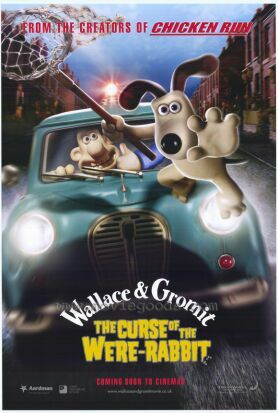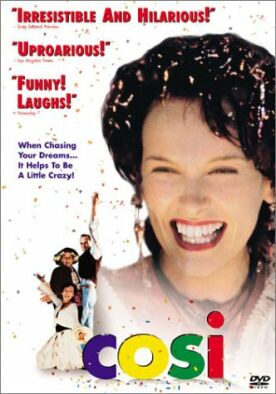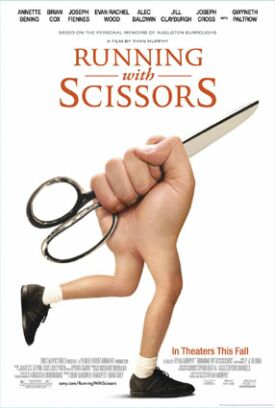Wallace & Gromit: The Curse of the Were-Rabbit
Like so much else, the servant who is wiser than his master goes back to Cervantes. Sancho Panza is to Don Quixote as Figaro is to Count Almaviva as Jeeves is to Bertie Wooster. It was all very amusing up until half a century or so ago, but nowadays it would be almost impossible for a fictional servant not to be wiser than his master. The savor has almost gone from one of the longest-running jokes of European culture. But Nick Park has given it a new lease of life by breaking through the species barrier in his wildly successful but short “claymation” films starring the cheese-loving inventor Wallace (voice of Peter Sallis) and his faithful dog Gromit. All three previous installments, A Grand Day Out (1989), The Wrong Trousers (1993), and A Close Shave (1995), were nominated for Oscars, and the last two won. Now at last Wallace and Gromit come to the big screen and at feature length in Wallace and Gromit: The Curse of the Were-Rabbit. Fans of the work of Mr. Park and his Aardman Animation Studios — which also produced Chicken Run (2000), an earlier collaboration with DreamWorks — will rejoice.
The advantage of making the wise servant a dog is that the master doesn’t have to be either delusional, like Don Quixote, or arrogant and self-important, like Beaumarchais’s Count Almaviva, or bird-brained like P.G. Wodehouse’s Bertie Wooster. Wallace is none of these things, merely an other-worldly inventor who lacks the common sense of his dog. The earlier films established that Gromit’s canine intuitiveness does not interfere with his ability to keep up — aided by a fat tome titled “Electronics for Dogs” — with Wallace’s ever more fantastical, Rube Goldberg-like inventions. He must understand Wallace’s business as well as his own in order to anticipate where and when Wallace will overreach himself, as he invariably does.
Lady Tottington (voice of Helena Bonham-Carter) is Wallace’s love interest in The Curse of the Were-Rabbit, and she brings with her an element of that favorite British subject, social class. She asks for Wallace and Gromit’s “Anti-Pesto” company’s help in dealing with an infestation of rabbits, which are also plaguing all the vegetable gardeners in their generic Northern English village — which seems to be just about everyone in it. Wallace is too earnestly middle-class himself not to be impressed by the summons to Tottington Hall, where there is soon to be a contest between the growers of giant vegetables. “We’re going up in the world,” he proudly announces to Gromit. But his humane — and very funny — methods of bunny-removal are soon clashing with the more traditional approach, represented here by a bald and brutish but aristocratic rabbit shooter called Victor Quartermaine (Ralph Fiennes). Lady Tottington¹s tenderheartedness to her bunnies makes her into a kind of reverse Dulcinea to the more forward-looking Wallace, since instead of being a scullery-maid who is taken for a noblewoman, she is a noblewoman who has the sentimentality of a scullery-maid. Besides, she says, “Victor has never shown any interest in my produce.”
The theme of class is thus quickly dissolved in a straightfoward rivalry between the two men for the lady¹s affections, which are never really in doubt. You would think that Gromit, being a dog and therefore designed by nature to hunt and kill things, would be more sympathetic to the aristocratic view of nature as red-in-tooth-and-claw. But the most brilliant thing about Gromit is that his doggy nature is entirely taken up by his loyalty to Wallace. And Wallace needs every bit of it when, as usual, he goes too far and invents the Mind-o-Matic, which “extracts unwanted thoughts and desires.” His purpose is to brainwash the captured bunnies into not liking vegetables — so that they can then be released back into the wild without any fear of destroying the village’s produce. (What Wallace imagines the rabbits will eat instead is never mentioned.) In trying the machine out, he finds — as, of course, it is inevitable he should find — that instead of making the bunnies turn up their noses at vegetables, he has produced a giant and hideously destructive half-man, half-rabbit. Only by Gromit’s keeping his head can he be saved from attack by an angry mob of vegetable growers who think that Anti-Pesto has let them down.
The comic invention with which the story is told is as rich and intricate as it is in the earlier Wallace and Gromit films, though here there is a bit more of the Hollywood-style post modern touch, as the film sends up old-fashioned horror flicks and King Kong, among other movie allusions. At one point the village’s vicar, the Reverend Clement Hedges (Nicholas
Smith) gathers the frightened villagers in the church to warn them that “by tampering with nature, we have brought a terrible judgment on ourselves” as ominous organ music plays in the background. Then the vicar turns toward the organ loft, where we see the organist hard at work, and says with annoyance, “Give over!” It’s impossible not to be charmed by this gentle, self-deprecating humor — as when over the closing credits the now standard disclaimer about how “no animals were harmed in the making of this picture” is toyed with in a comically original way.
The trouble is that it’s too true. Neither the animals, nor the people, nor the monsters in this film come to any harm. Even cartoon killing is eschewed. It’s a reminder of the essential unseriousness of the post-modern style, of which The Curse of the Were-Rabbit may one day be looked upon as the crowning achievement. Mr. Park has also learned from Cervantes the mock-heroic, and much of the film’s effect is produced by the comic contrast between two knights jousting over a fair damsel — while their dogs “dogfight” in fairground airplanes — and the everyday world of cheese and giant vegetables and cotton candy in the midst of which the contest takes place. But it is Cervantes without the cruelty and heartbreak that bring it back to reality, and I can’t help feeling that, good as the movie is, it is missing something essential by leaving these things out.
Discover more from James Bowman
Subscribe to get the latest posts to your email.








